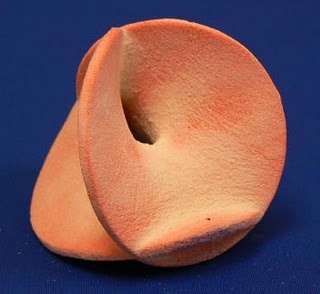We’ve seen many different materials being used as the print medium for 3D printers, including the obvious (titanium, wax, plastic) and a few rather bizarre ones (paper, nutella, pasta and sugar), but we haven’t really noticed Glass yet. Until now.
According to PhysOrg.com news:
A team of engineers and artists working at the University of Washington’s Solheim Rapid Manufacturing Laboratory has developed a way to create glass objects using a conventional 3-D printer. The technique allows a new material to be used in such devices.
The key to the new Vitraglyphic process was the realization that if a material could be powdered to less than 20 microns in diameter, the material could likely be successfully fed through 3D printers. The glass powder is mixed with a binder and then objects are printed. After printing completes, the object is then fired to fuse the glass bits together.
Via University of Washington and Physorg (Hat tip to Micah!)


